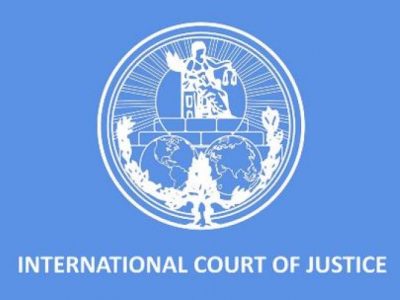 There’s been talk lately of demanding compensation if a country’s negligence allowed a disease to spread globally. There is a long history of discussion regarding similar damage claims in international environmental law. The same principles seem applicable to disease spread. In theory, damages should be available in both cases. The core principle of international liability …
There’s been talk lately of demanding compensation if a country’s negligence allowed a disease to spread globally. There is a long history of discussion regarding similar damage claims in international environmental law. The same principles seem applicable to disease spread. In theory, damages should be available in both cases. The core principle of international liability …
Continue reading "International Liability for Harm: Epidemics and Pollution"
The post International Liability for Harm: Epidemics and Pollution appeared first on Legal Planet.
#environmentallaw #intheory
There’s been talk lately of demanding compensation if a country’s negligence allowed a disease to spread globally. There is a long history of discussion regarding similar damage claims in international environmental law. The same principles seem applicable to disease spread. In theory, damages should be available in both cases.
The core principle of international liability stems from the 1941 Trail Smelter decision. This international arbitration proceeding involved a copper smelter in Canada whose pollution caused extensive harm across the U.S. border. The arbitration tribunal ruled that the United States was entitled to damages. Trail Smelter established the principle that states can be responsible for environmental harm in other states caused by their citizens.
This principle has become rooted in international law. By 1971, the Stockholm Declaration had proclaimed that “States have . . . the responsibility to ensure that activities within their jurisdiction or control do not cause damage to the environment of other States or areas beyond the limits of national jurisdiction.” Similarly, under section 601 of the Restatement (Third) of Foreign Relations Law, “a state is obligated to take such measures as may be necessary, to the extent practicable under the circumstances, to ensure that activities within its jurisdiction or control . . . are conducted so as not to cause significant injury to the environment of another state or of areas beyond the limits of national jurisdiction.” Thus, under international environmental law, nations are responsible for the harm they and their citizens cause, if they fail to take reasonable steps to prevent it.
In principle, the U.S. failure to take any meaningful effort to reduce carbon emissions under Bush and Trump seems a clear violation of this principle. Legally, the most difficult aspect of a damages case would be proof of causation. A tribunal would first have to determine the amount of emissions reduction that the U.S. should have reasonably undertaken. Then it would have to determine the amount of harm that the incremental pollution caused.
The Trail Smelter principle is not limited to environmental law. The classic example is the Corfu Channel case, which was the first case heard by the International Court of Justice after its founding in the 1940s. British ships passing through Albanian territorial waters were damaged by mines of unknown origin in the Corfu Channel between Greece and Albania. The International Court of Justice held that Albania was liable because it must have known of the mines but failed to warn other countries.
The same principle seems applicable to epidemics. At the very least, failure to warn of an epidemic would seem to be a basis for liability. It also seems plausible that negligent failure to prevent the epidemic’s international spread could also be a basis for liability. As with climate change, causation would be a major stumbling block to liability. It would be difficult to prove that the epidemic would have been stopped or its spread limited by additional warnings or precautions. This is particularly so because a more recent case set a high standard of proof on causation. Moreover, to the extent that damages were increased by negligence on the part of the complaining country, that might also limit recovery.
These international damage cases are infrequent, so the precedents are sparse. There is one glaring reason why cases are not brought more frequently: actually collecting damages can be nearly impossible. It took over forty years for the British to collect its judgment against Albania in the Corfu Channel case. China has already declined to follow at least one major ruling against it by the International Court of Justice. Collecting damages from a superpower would be, shall we say, a delicate undertaking.
It seems to me that international law is most significant in this context because it articulates a moral principle: that nations, as well as individuals, have a duty to take reasonable steps against harming others. If they fail to do so, they should take responsible actions to assist others who suffer as a result. Sovereign nations cannot be compelled to adhere to these principles, but they should at least aspire to do so.
The post International Liability for Harm: Epidemics and Pollution appeared first on Legal Planet.
By: Dan Farber
Title: International Liability for Harm: Epidemics and Pollution
Sourced From: legal-planet.org/2020/05/12/international-liability-for-harm-epidemics-and-pollution/
Published Date: Tue, 12 May 2020 15:38:16 +0000
Vist Maida on Social Me
Website Links
Maida Law Firm - Auto Accident Attorneys of Houston, by fuseology

No comments:
Post a Comment